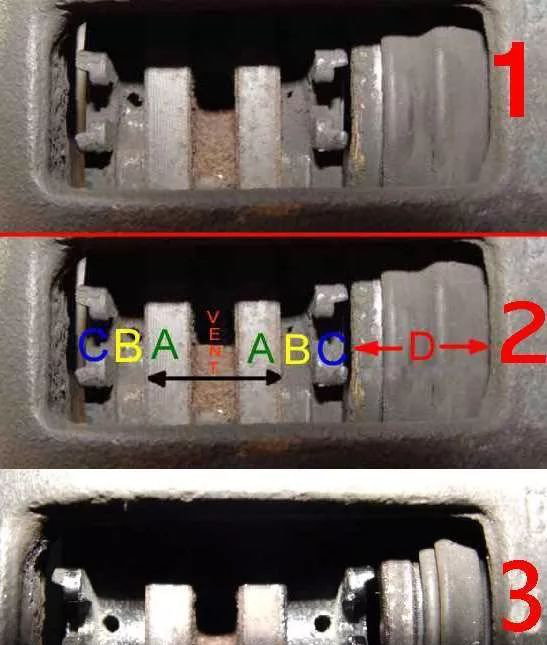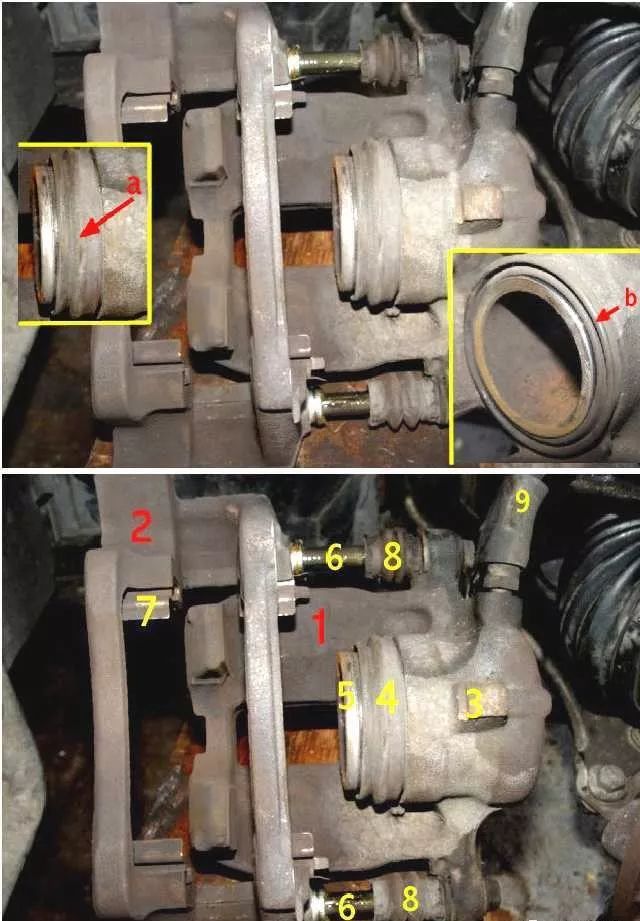Low frequency howl
Abnormal noise occurs when the brake is pressed, even when the car is new. In the face of the harsh noise, on the one hand, I am worried about the safety of braking, on the other hand, it also affects the comfort of the car. Then the brake makes a strange noise. What is the reason?

1. Original brake pads.
2. An integral part of the brake pad disc layout.
3. New brake pads/Nov.04
It is generally called caliper noise, which is caused by the vibration of caliper components and may also be caused by the vibration of suspension system. New car calipers or suspension systems have slight early morning vibration sensitivity, especially in winter morning.
Check the caliper: suspension system and bushing.

Check the brake pads: whether they are too smooth and excessively used.

1 caliper, 2 axle position, 3 hydraulic cylinder, 4 rubber sleeve, 5 piston, 6 return position pin, 7 brake pad return spring, 8 dust boot, 9 hydraulic hose.

Dull echo
Generally, it occurs when the pedal is loose, which is easy to cause steering wheel shake, and new models are easy to cause such problems, which are caused by the difference in brake disc thickness, and maintenance of ball cage connectors.
Check: brake pad wear.
Abnormal wear of moving disc
Cause: The surface of the brake disc is dirty and the material density of the brake disc is uneven. Excessive operating temperature and brake disc installation torque do not match.
Check: check the brake disc before replacing the brake pad, check the thickness of the brake disc with a caliper, reinstall the bolts fixing the brake disc, and measure the flatness of the working surface of the brake disc.
Case 1:
Appearance: partial brightness of friction material
Cause: the piston works on different shafts; The brake pad friction material density is uneven.
Effect: The brake pads wear fast and the brake discs wear locally.
Measures: adjust the piston, check the seal and replace the brake pad.
Case 2:
Appearance: the friction material has oil stain.
Cause: oil sticking during repair or maintenance.
Effect: the coaxial braking force is unbalanced, and the brake is deviated.
Action: Replace the brake pad.
Case 3:
Appearance: the friction material edge is worn into an arc or groove.
Cause: Severe brake disc wear, human factor.
Impact: car jitter, abnormal noise, abnormal wear of brake pads.
Measures: Grind the brake disc edge with obsolete brake pads until there is no groove, eliminate artificial chamfering, and replace the brake disc if necessary.
Case 4:
Appearance: There is foreign matter in the friction material.
Cause: It cannot be prevented.
Effect: The car makes abnormal noise and damages the brake disc.
Measures: Replace the brake pad. The brake disc groove obviously needs to be replaced.
Case 5:
Appearance: The brake pad is partially worn.
Cause: There are inclusions between the brake disc and the brake pad.
Effect: There is noise and damage to the brake disc when braking.
Action: If it is serious, replace the brake disc and brake pad.